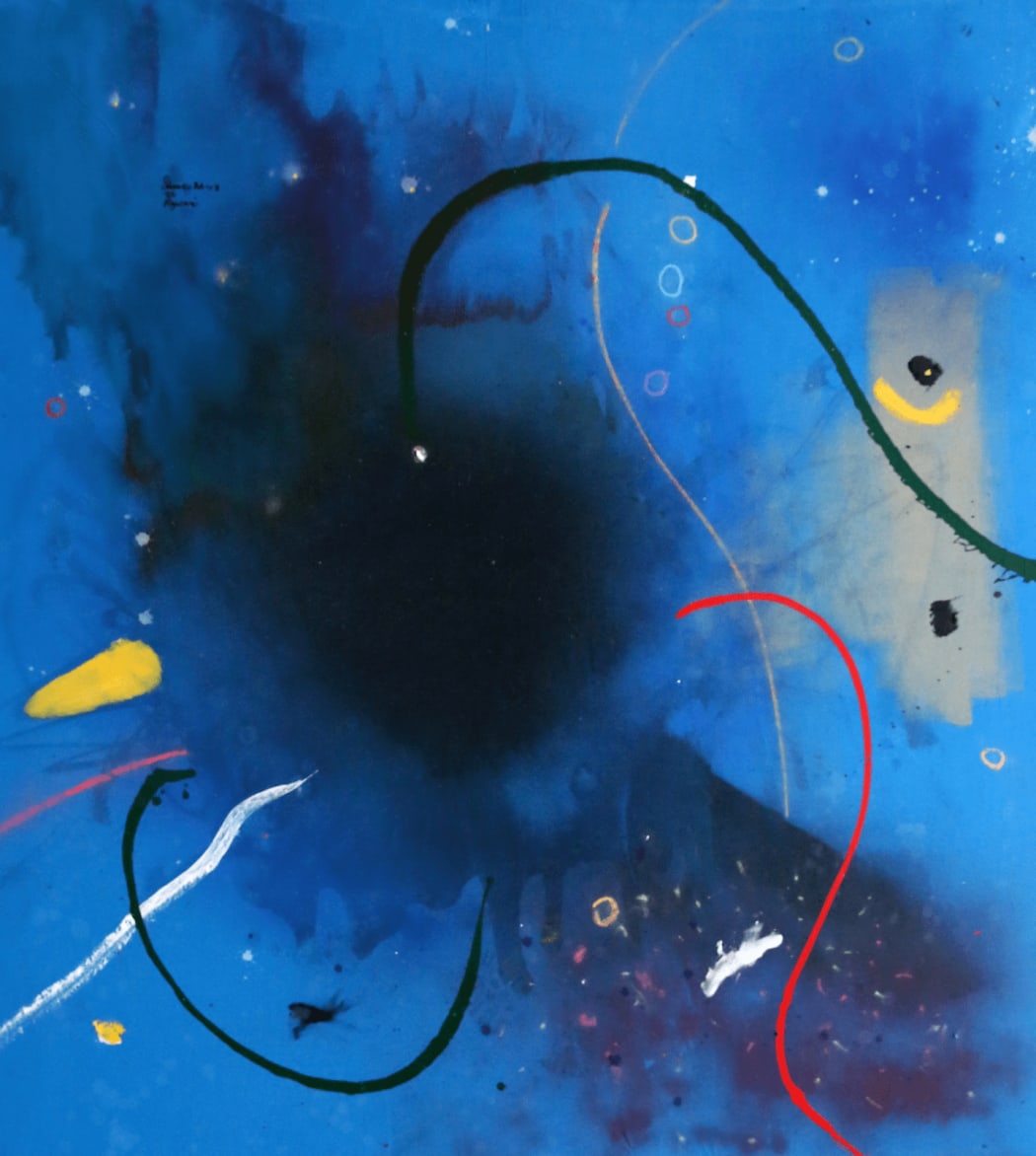
With Sibusiso Ngwazi’s first solo show in Europe currently on view at the gallery, I thought it would be a good moment to write a short introduction on non-figurative contemporary African art. Ngwazi, just as a few others with him, is pushing this exciting genre of art forward in brave and innovative ways, yet the current fashion for colourful portraits makes these artists largely operate under the radar. I have opted for the denominator non-figurative over abstract, yet each attempt of categorisation of art is flawed of course, and a typical occupation of the arm-chair art historian. In a way, the division between abstraction and figuration is a false, yet helpful, opposition. Artists such as Ngwazi explore the possible interactions between color, lines and forms, but also create marks and shapes that might suggest anthropomorphic elements, landscapes, or objects. The assumed abstract in such a way can suddenly become very figurative once the visual language of an artist gets apprehended. When Mostaff Muchawaya showed me pictures of the region where he grew up, Zimbabwe’s eastern highlands, his abstract paintings turned into landscapes before my eyes. A new generation of young African painters are thus rethinking what we might call, for lack of a better term, abstraction. Yet, in the artist’s eyes, such labels are irrelevant, being more interested in the infinite ways paint can be applied to develop suggestive, beguiling, and transcendent compositions. Their non-objective, non-representational works highlights their unique and inspiring interpretations of reality. Let me introduce you to ten abstract African artists you want to get to know.
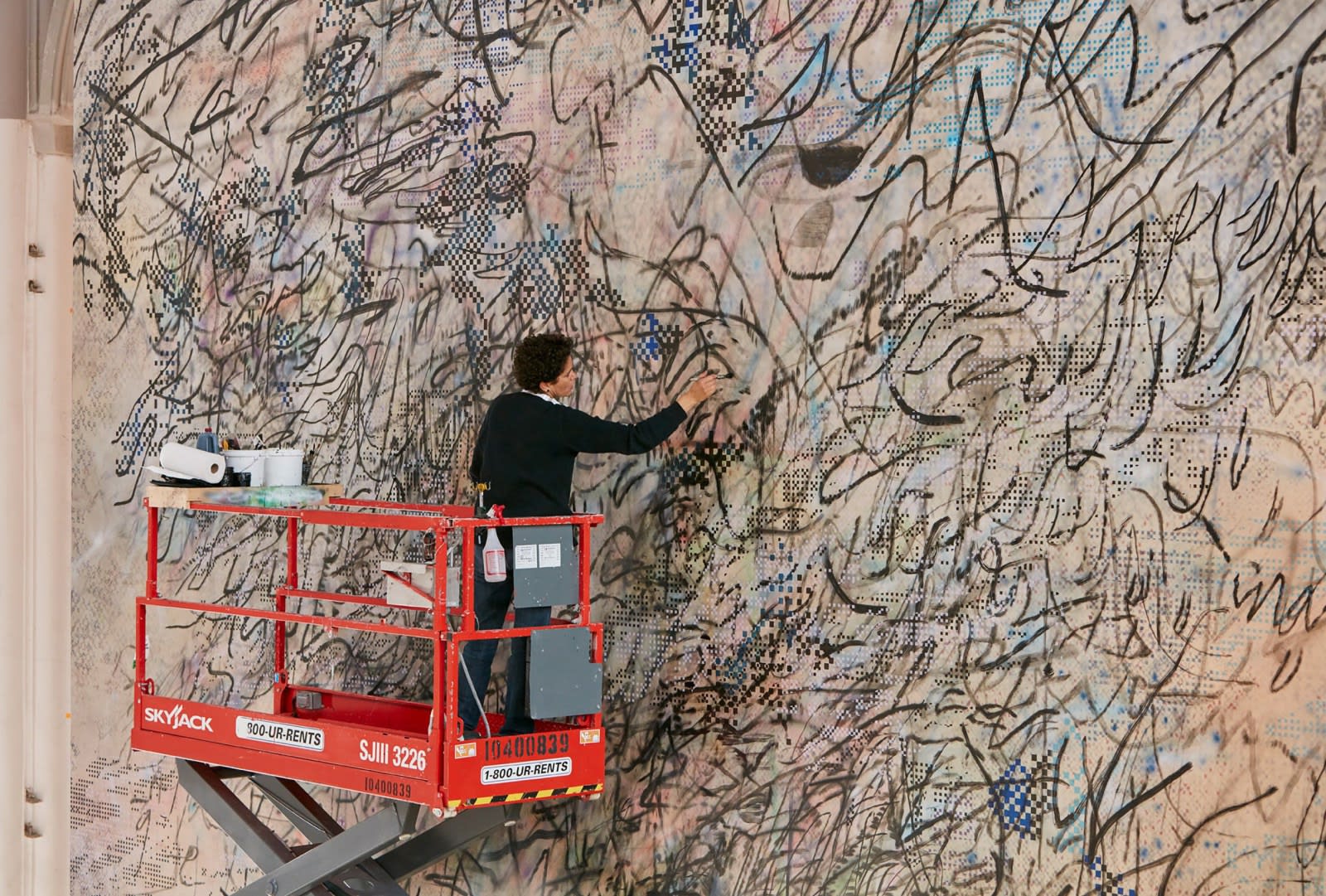
Julie Mehretu painting HOWL, eon (I, II), 2017 at SFMoMA. Photo: Tom Powel Imaging, Inc. / Courtesy of Julie Mehretu / Marian Goodman Gallery.
Julie Mehretu (b. 1970, Ethiopia) known for her multi-layered large-scale paintings of abstracted landscapes and included in Time’s 100 Most Influential People of 2020 (nominated by David Adjaye). Mehretu’s gestural paintings have been acquired by many major contemporary art museums in the world, and several of her works have been sold over €1 million on the art market. Prolificly featured at the 2019 Venice Biennale, her landscapes mirror our chaotic socio-political landscape, expressed through her own visual language. The artist has been a trailblazer of non-figurative contemporary African art and is probably the most famous artist in this list.

One of my favourite contemporary artists is Jade Fadojutimi (b. 1993). You might recall the artist’ solo presentation presented by Gagosian at Frieze London 2022, as illustrated above. Sold-out long before the opening of the fair, Fadojutimi transformed the gallery’s booth into an immersive, energetic environment of seven monumental paintings, enveloping visitors in a vibrant symphony of color. Born in London, but of Nigerian heritage, the artist is well-known for interspersing her fluid, spectral abstractions with shimmering allusions to the natural world. Although still only 30 years old, Fadojutimi has been an art market darling for a while now, hopefully paving the way for many others to follow in her footsteps.
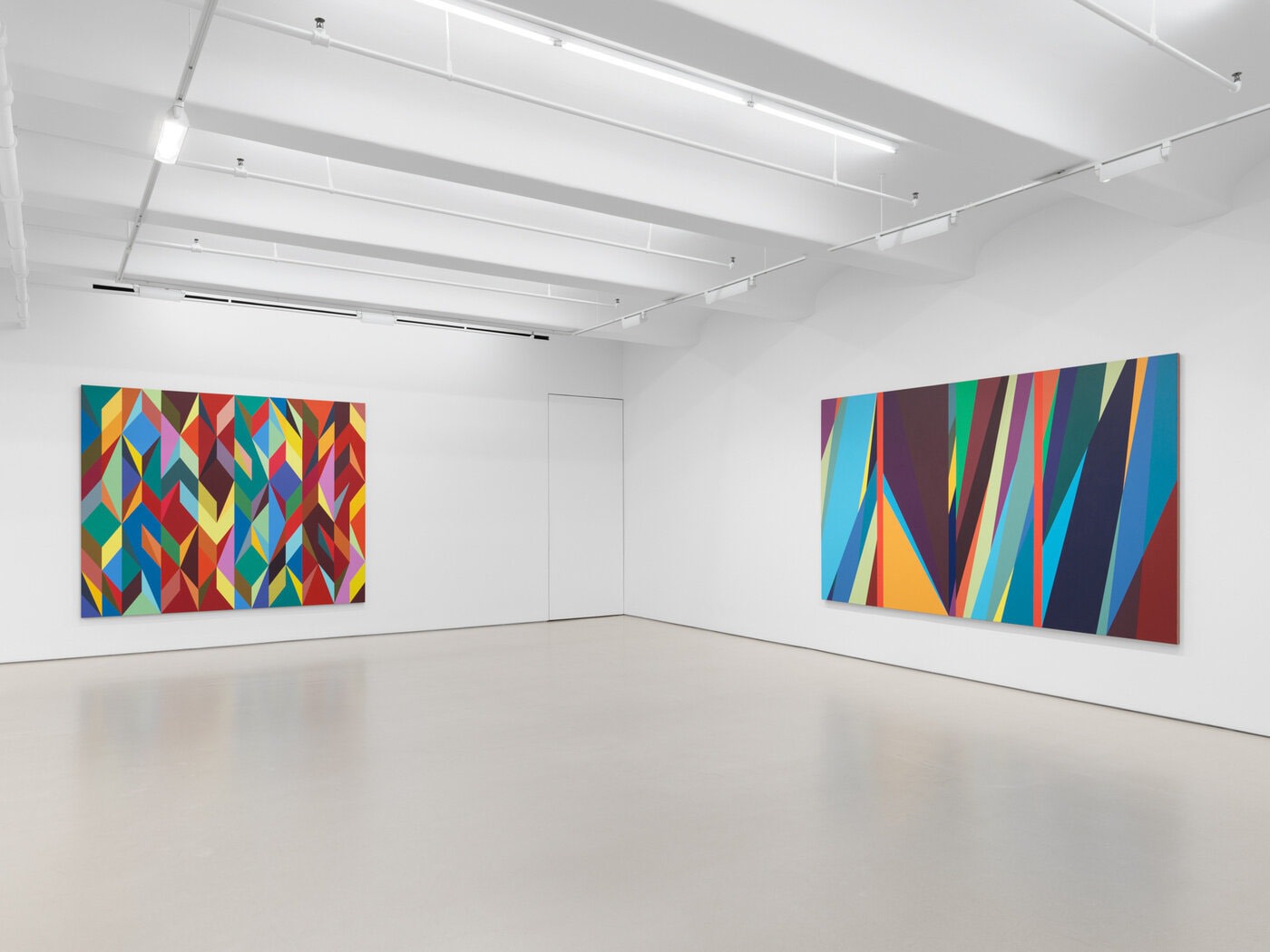
Installation view “Burning Cross” by Odili Donald Odita. Image courtesy of Jack Shainman Gallery.
Born in Nigeria in 1966, Odili Donald Odita lives and works in Philadelphia, and has exhibited extensively in museums and institution in the US. He just had a solo exhibition, “Burning Cross” at Jack Shainman Gallery in New York and a monograph surveying over twenty years of the artist’s career was published by Sternthal Books in January. Odili’s vibrant abstract paintings blur the borderlines of American, African, and Western European traditions, which according to art critic Rob Storr, has led him to “rejuvenate abstract painting 100 years after its invention – and in the process create a culturally syncretic idiom that is all his own”. Odili’s father, Emmanuel Odita, was a member of the Zaria Arts Society, a modernist Nigerian art movement - a reminder that modernism was born and developed in multiple places around the same time.
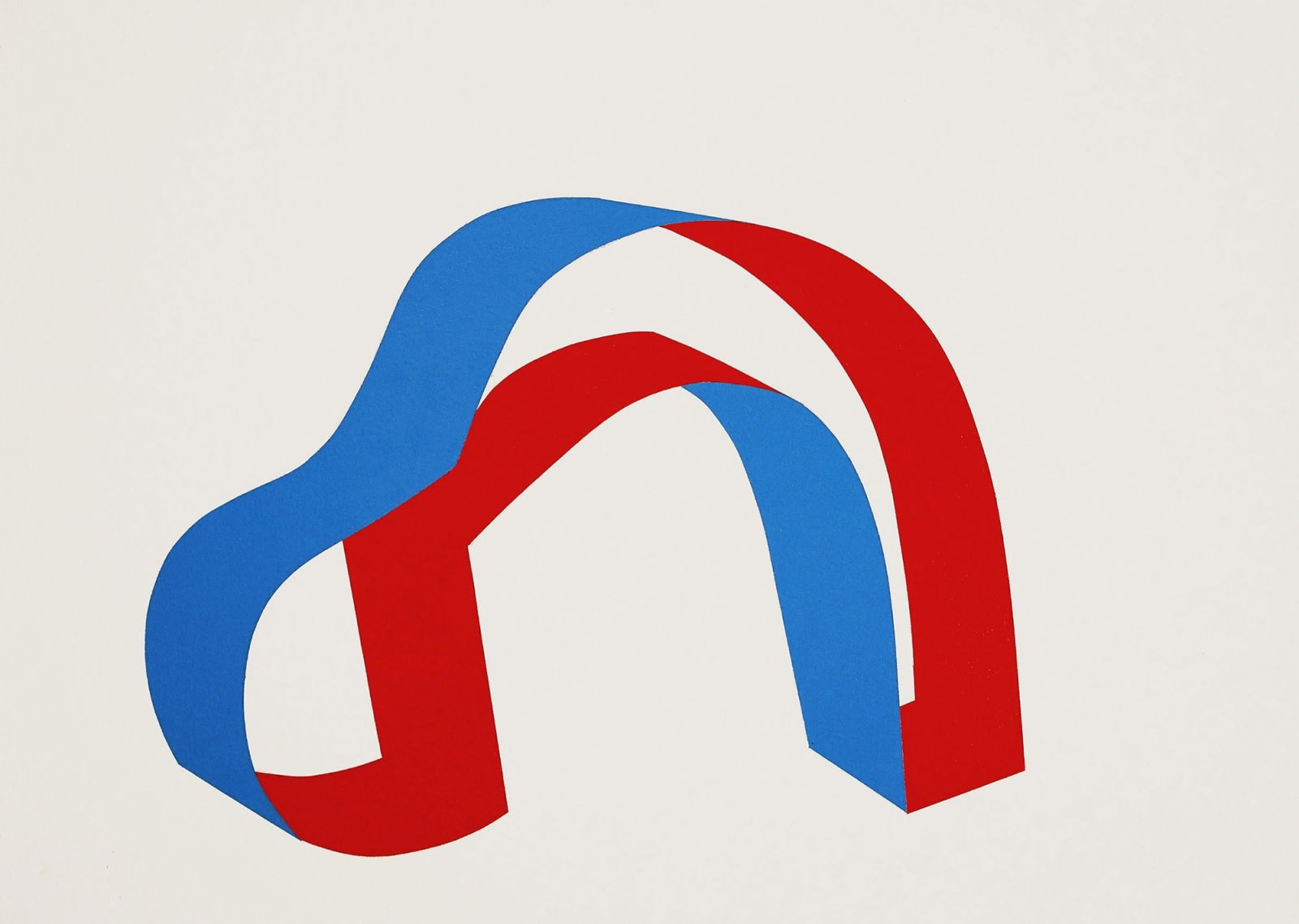
Osi Audu – “Self-Portrait after Dogon Bird Mask” (2018). Image courtesy of Sakhile&Me.
I discovered the work by Nigerian born Osi Audu (b. 1956) through the German gallery Sakhile&Me. His sculptures and paintings present a visual language of geometric shapes and a palette of primary colors to explore the tangible and intangible aspects of the self and self-consciousness. His practice draws inspiration from ancient Yoruba philosophies and modern Western approaches, such as the idea that objects can contain, channel and transform natural forces. Following the Yoruba concept of Ori Inu ("the inner head"), Audu's works - many of them displayed as a series of "self-portraits" - draw our attention to the artist's focus on the head as a signifier of consciousness and as an object of self and self-knowing. Aficionados of classical African masks might enjoy the subtle references to well-known mask types.
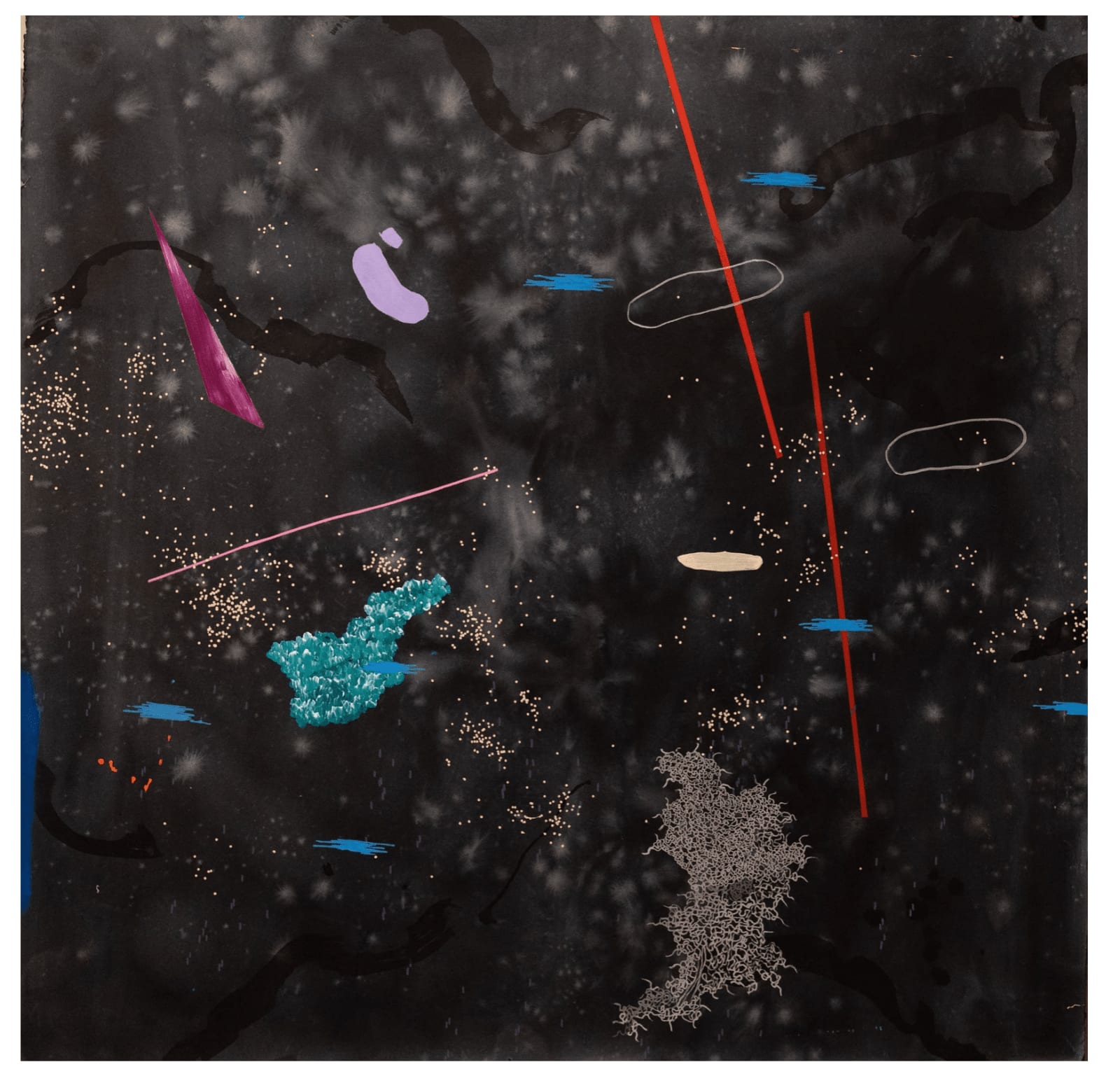
Mongezi Ncaphayi – “Lets Say We Did I” (2023). Image courtesy of Montague Contemporary.
Our friends at Montague Contemporary in New York just launched their curated group show “African Abstraction II”, exploring the varied use of abstraction across the African continent. We’re especially fond of the works by South African artist Mongezi Ncaphayi (b. 1983) in which he attempts to map his own subconscious. A saxophonist himself, Ncaphayi is heavily inspired by jazz. Informed by personal traumas and lived experiences, his highly emotive works form a unique abstract visual language explored on top of a layer of black paint on the canvas. Forms of movement are integral of his practice - visually capturing how he listens and how he responds to his inner emotions. ‘The compositions are free flowing improvisations. It’s a form of communication between the work and myself’, explains Ncaphayi. An exhibition to go discover if you would find yourself in New York in the coming weeks!

Sibusiso Ngwazi - “Corpus Christ” (2022). Image courtesy of Duende Art Projects.
Star of the moment of course is Sibusiso Ngwazi. Although only 24 years old, the South African self-thought artist, currently on view at the gallery with his solo exhibition “The Blind Side”, undoubtedly fits within this overview. As Ashraf Jamal wrote in his essay about the painter’s work: “We venture into his paintings, as though upon an ocean, ‘trackless and unexplored’. There, in the shapeless-yet-shaping midst of a painting, we find our own coordinates.” As the art critic as written elsewhere, “abstraction supposes this in-road”, and in such a way it is somehow unsurprising that psychoanalysis and abstraction emerged simultaneously in the West. Ngwazi documents this inner journey in his large-scale non-figurative works. Everywhere your eye goes, it finds things to engage it. A dark blue deep pulls us in and swirling lines pull our gaze towards the center. Expressing a deep spirituality, Ngwazi’s paintings evoke a sense of transcendence, free from the boundaries of time and space. If you’re in Belgium anytime soon, be sure to come explore these works in person! You can discover all available works here.
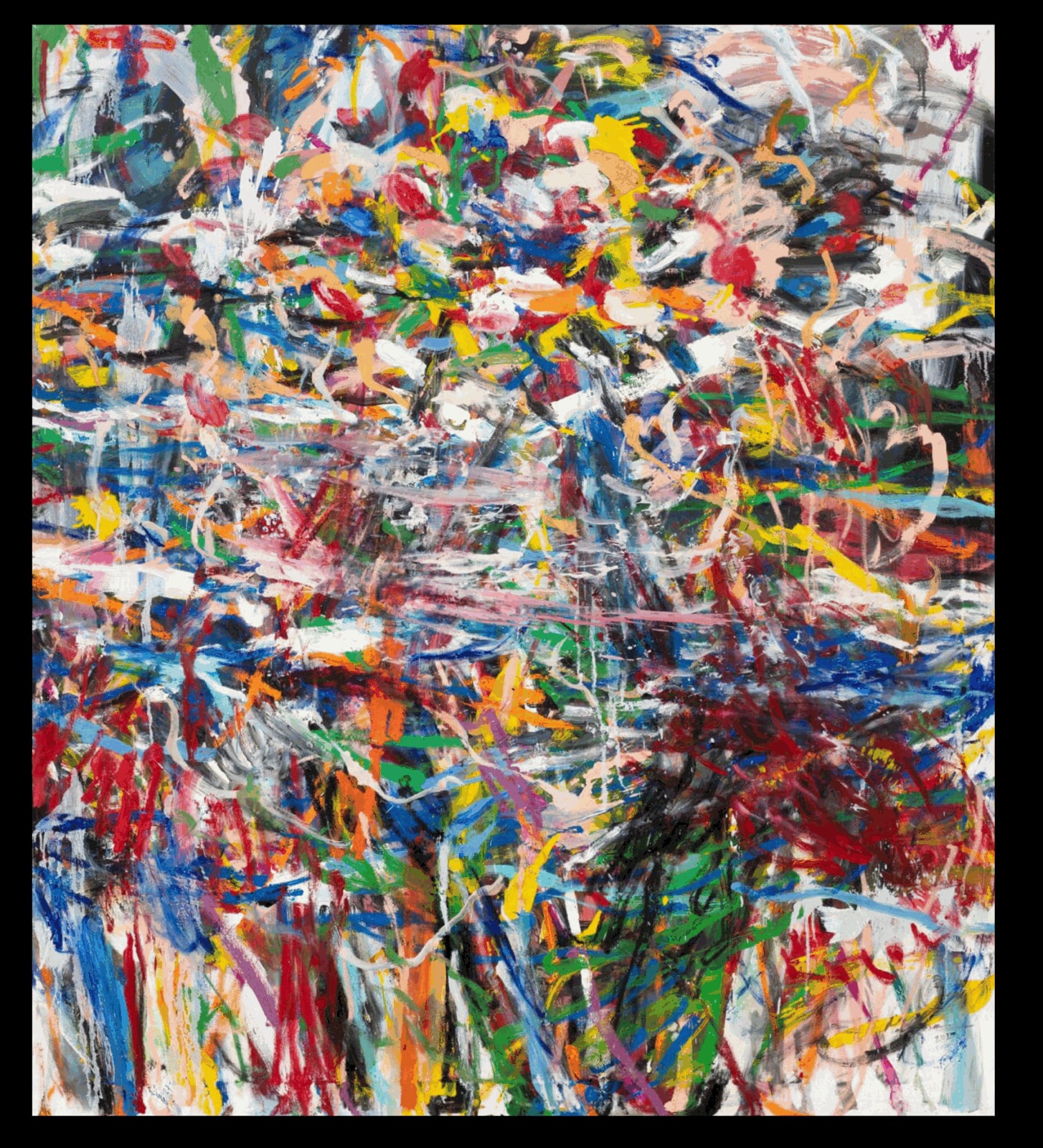
Misheck Masamvu – “Hue and Cry” (2022). Image courtesy of Goodman Gallery.
Living and working in Zimbabwe, Misheck Masamvu (b. 1980) explores and comments on the socio-political setting of his country in a unique expressionist style. With its dramatic and graphic brushstrokes and striking colours, his large-scale paintings often oscillate somewhere between abstraction and figuration. Earlier this year, the artist had a beautiful solo exhibition, “Safety Pin” at Goodman Gallery in Cape Town. Unquestionably an artist to follow!

Mostaff Muchawaya, “Chimwanda Mountain near Nyazura” (2022). Image courtesy of Duende Art Projects.
Earlier this year, we presented a new body of work by a second Zimbabwean artist, Mostaff Muchawaya (b. 1981). For the first time ever, the artist presented large-scale paintings recalling the landscapes of his youth. Yet, at first glance, and without such background information, they could easily be interpreted as powerful abstract expressionistic works. Joan Mitchell was a name often cited by visitors, and also Albert Oehlen and the German Neue Wilde such as Anselm Kiefer were frequently mentioned. These paintings once more show how the dichotomy between abstraction and figuration doesn’t really apply. The painting’s title makes no mistake about the precise topographical inspiration of this work, yet the execution of this expressionistic interpretation comes close to the abstract, underlining the brilliant creativity of the artist. We still have several of these captivating landscapes available; you can explore them here.
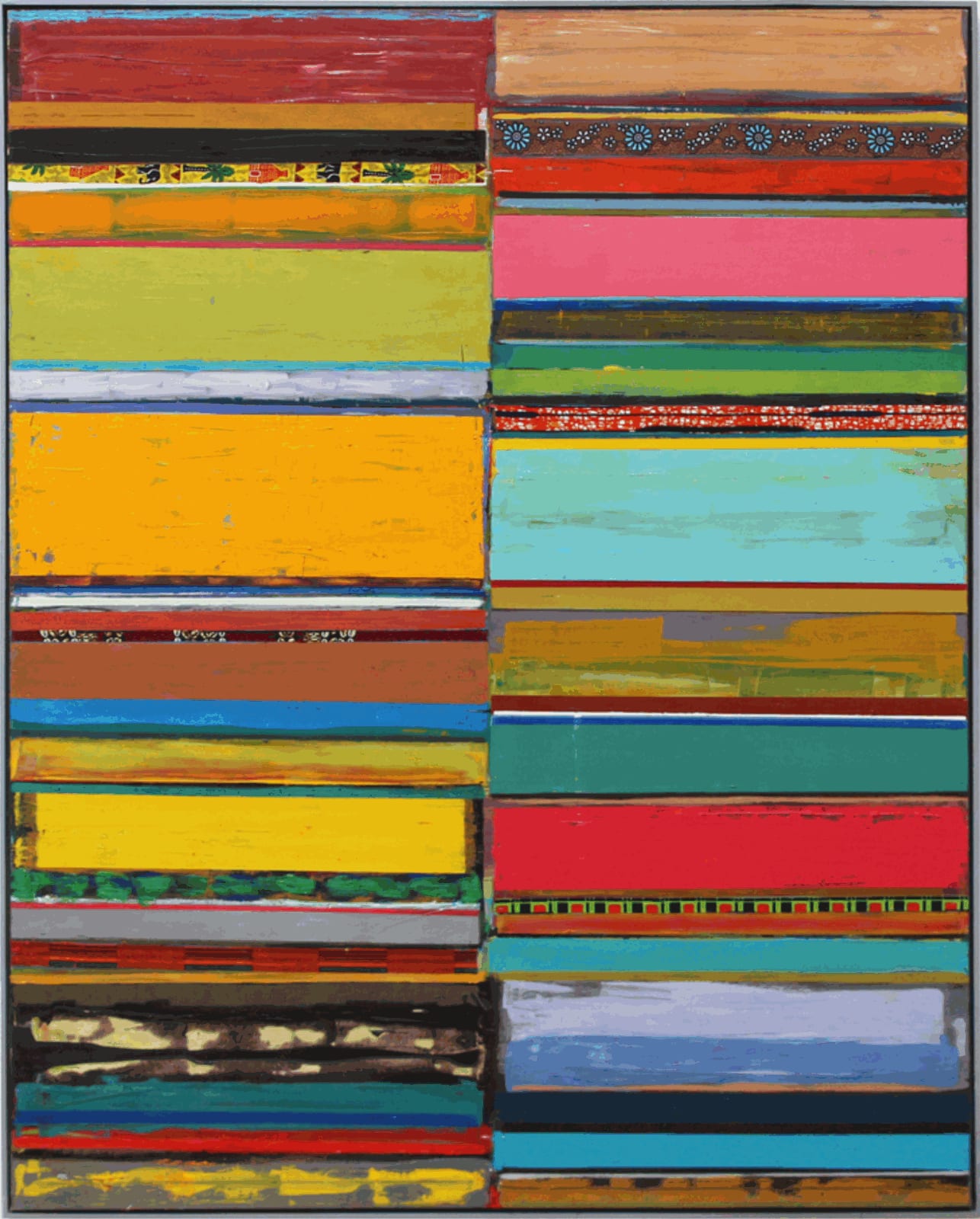
Tegene Kunbi, “Don’t talk” (2023). Image courtesy of Bode.
Last year, the Grand Prix Léopold Sédar Senghor was awarded to the Ethiopian artist Tegene Kunbi (b. 1980) at the opening of the 14th Biennial of Contemporary African Art 2022 in Dakar. While academically trained in realism, he has chosen a non-figurative path. The Berlin-based artist views the study and creation of his abstract paintings as a rebellious act. For Kunbi, this rebellion comes about in the abstraction of bright and colorful textiles that reference his home country of Ethiopia. Applying both paint and textile on canvas within a rectangular grid, the artist conveys complexities within his personal experience and that of his country. The artist has his first solo show at Primo Marella Gallery in Milan later this week, and just had a solo show at Berlin’s Bode Gallery, so 2023 definitely started very good for him.

Esther Mahlangu – “Abstract” (2016). Image courtesy of Sotheby’s.
We end this list with Esther Mahlangu (b. 1935), the oldest artist in this list, and famous for her graphic abstract works celebrating her Ndebele heritage. 87 years old, she’s one of South Africa’s best-known artists. The multi-award winning artist has several solo shows planned for Europe this year (in April in London at Almine Rech and a global museum tour and retrospective exhibition is planned for 2024. She is one of the few artists who have successfully managed to bridge the “traditional” and “contemporary” worlds and can be viewed as one of the most important visual artists of her generation. Surprisingly, from a market point of view, Mahlangu is priced very low for her stature and importance! You might recall we showed the work of the three other Ndebele artists last year in Paris; you can download the catalog, including a text on this indigenous abstract art style here.
Voila, I’m happy to have introduced you to 10 African artists sailing against the wind of the figurative frenzy. Let me know which artists I forgot to include! I can easily list another 10 great abstract painters, but then it becomes more difficult.. You can perhaps discover yourself how distinctive their practice is by comparing it with the works featured in both the recent sale of Modern and Contemporary African art of Sotheby’s (numbering 160 artworks) and Bonhams (with 67 lots), which both barely included any non-figurative paintings!

